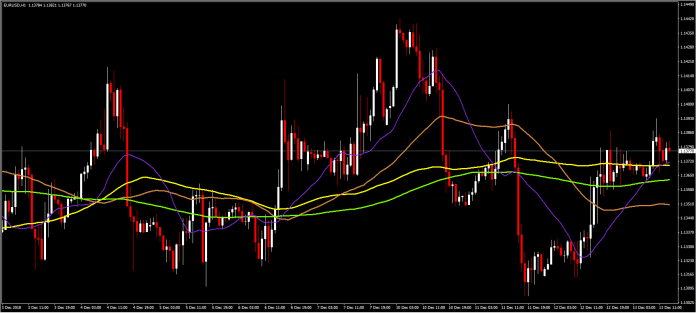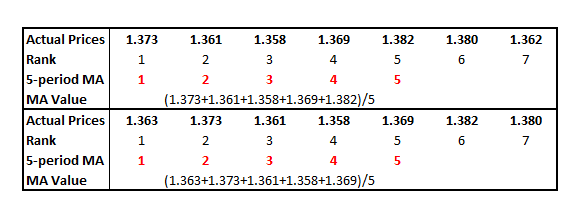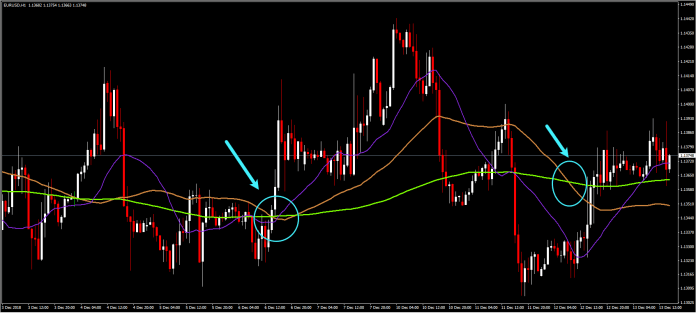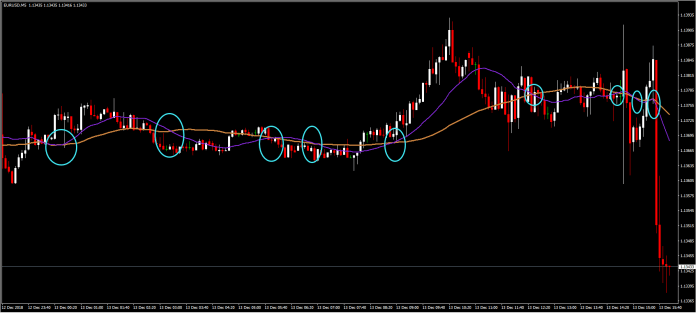This is the first of a two series post on Moving Averages. In this post, we introduce the notion of moving averages and then elaborate on how to compare their performance.
To begin with, Moving Averages (MAs) employ past price movements, usually the closing price, in order to smooth out any one-off erratic behaviour or unexpected/unexplained volatility (noise, as it also known) so that the user can see the trend more clearly. Put simply, a moving average simply averages the last values in a sequence of prices, depending on the length we choose. For example, a 9-period moving average would average the values of the last 9 periods, while a 20-period moving average would average the values of the last 20 periods.
The following table presents a short example of how a moving average works. The first box shows what the moving average value would have been at that specific point time. Notice that I am using a 5-period moving average in this example, which means that I am using the average of the last 5 prices of the currency pair (EURUSD in this case). Then, in the following box, we see that as another day elapsed, a new price came up (1.363), which pushed everything one position to the right. This means that the previous day’s price at rank #5 (1.382) has moved to rank number #6 and we will thus not use it in the calculation of the 5-period MA. This would mean that every period the price which was previously at number #5 will be scrapped, while a new price will enter at #1.
The analysis above is not limited to the 5-period case, but can be extended to any MA, from the fastest 3-period one to the longer-run 200-period MA. The difference between short- and long-term moving averages mainly lies in what we seek to study. As expected, the longer-term MAs tend to show us the longer-term trend, while short-term MAs allow for the examination of shorter-term movements in the price. Mathematically, this makes sense given that a new price in a 5-period moving average would receive a weight of 1/5, which is much bigger than 1/200 in the case of a 200-period moving average. A good example of short- and long-term moving averages can be seen in the first image of this post.
In particular, we see that the shorter-term MA (purple line), specified to have 20 periods, moves much faster than the longer-term MAs. As it appears, the 200-period MA (green line) and the 100-period MA (yellow line) tend to move much more slowly to changes in the price. The orange line, depicting the 50-period MA, moves in-between shorter and longer MAs. Naturally, other MAs also exist, with any possible number of periods being up for use.
To begin with, notice how using just long-term MAs would be pointless: the 200-period MA and the 100-period MA cross just once in 1-hour chart, with the cross not providing any meaningful sign as the two move more or less in parallel. In essence, what we would really like is for shorter-term MAs to cross longer-term MAs. For example, the 50-period MA, in combination with the 200-period MA issue much better signals in this chart. As the 50-period MA crosses the 200-period MA from below a sell sign is issued. The sign, in retrospect or backtesting if you prefer, appears to be correct, even though the sell sign issued later on does not work as expected. In particular, it appears that the sell sign would come too late, given that we would have already experienced losses at that point.
On the other hand, the 20-period moving average and the 50-period MA appear to work much better. As the picture suggests, the signals issued appear to be much more accurate, regarding the ongoing trend. Naturally, the signs do not provide support as to where the trading target should be, but we will leave that as a topic for a future post. Also note that the same MAs which offer good guidance for the 1-hour chart may prove problematic if employed at a different frequency.
The following chart illustrates the same two moving averages may not work so well for the 5-minute chart. The indicators, while correct for the larger movement in the middle of the chart, show too many false crossing signs which would lead to losses. This is most likely because the frequency is too high for the averages to reach proper levels. As such, one should remember that we need to backtest our moving average selection before committing ourselves to a trade. Thus, in the second part we will deal with shorter-term MAs and have a look as to how these can be used for other frequencies.
Disclaimer: Nothing in this communication contains, or should be considered as containing, an investment advice or an investment recommendation or a solicitation for the purpose of purchase or sale of any financial instrument.
Recommended Content
Editors’ Picks
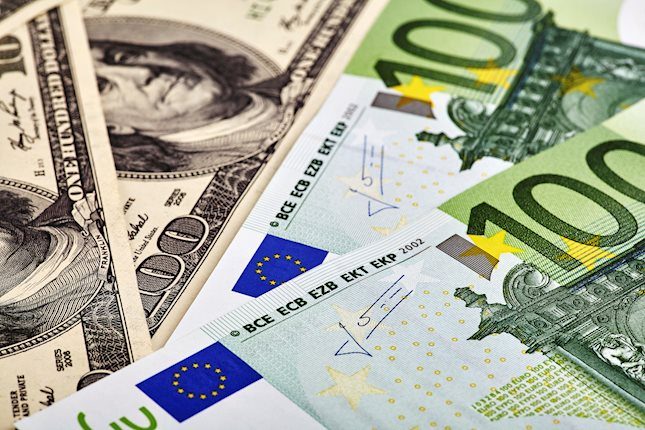
EUR/USD clings to recovery gains near 1.0850 ahead of Fedspeak
EUR/USD trades in positive territory near 1.0850 on Friday following a four-day slide. China's stimulus optimism and a broad US Dollar correction help the pair retrace the dovish ECB decision-induced decline. All eyes remain on the Fedspeak.

GBP/USD pares UK data-led gains at around 1.3050
GBP/USD is trading at around 1.3050 in the second half of the day on Friday, supported by upbeat UK Retail Sales data and a pullback seen in the US Dollar. Later in the day, comments from Federal Reserve officials will be scrutinized by market participants.

Gold at new record peaks above $2,700 on increased prospects of global easing
Gold (XAU/USD) establishes a foothold above the $2,700 psychological level on Friday after piercing through above this level on the previous day, setting yet another fresh all-time high. Growing prospects of a globally low interest rate environment boost the yellow metal.

Crypto ETF adoption should pick up pace despite slow start, analysts say
Big institutional investors are still wary of allocating funds in Bitcoin spot ETFs, delaying adoption by traditional investors. Demand is expected to increase in the mid-term once institutions open the gates to the crypto asset class.

Canada debates whether to supersize rate cuts
A fourth consecutive Bank of Canada rate cut is expected, but the market senses it will accelerate the move towards neutral policy rates with a 50bp step change. Inflation is finally below target and unemployment is trending higher, but the economy is still growing.

Best Forex Brokers with Low Spreads
VERIFIED Low spreads are crucial for reducing trading costs. Explore top Forex brokers offering competitive spreads and high leverage. Compare options for EUR/USD, GBP/USD, USD/JPY, and Gold.
